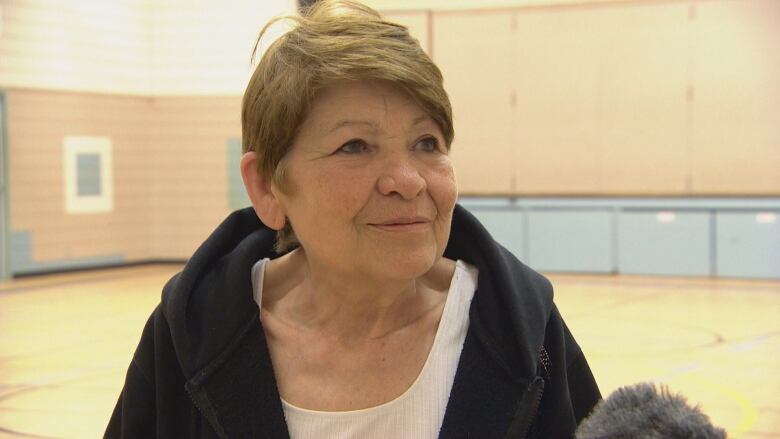Students at Saskatoon school get first-hand look at Métis history
Bell was stolen by Canadian soldiers after Battle of Batoche in 1885

Kids at Fairhaven School in Saskatoon had the chance to see a piece of history Thursday.
There is controversy over the bell's exact origin. It's either from Batoche, Sask., or Frog Lake, Alta., depending on whose historical account you believe.
Either way, its history is tied up with the birth of the Métis nation and the last battle of Louis Riel in the 19th century.
The bell was stolen by Canadian soldiers as a trophy of war after the Battle of Batoche in 1885. It remained in a legion hall in Millbrook, Ont., until 1991, when Billyjo DeLaRonde and four other Métis people took it back to Batoche, which is about 75 kilometres northeast of Saskatoon.
DeLaRonde came to the school on Thursday to talk about the history of the bell.
The bell is named Marie Antoinette, but it is not to be confused with the last Queen of France. In this case, Marie is a variation of Mary, the mother of Jesus, and Antoinette is referring to the patron saint Anthony.

DeLaRonde insists it was from Batoche.
"They got the story wrong about the bell," said DeLaRonde. "There's certain things that they had asserted and they're not true. By way of examples, there's bullet marks on the bell."
DeLaRonde said Batoche is the only battle where a Gatling gun was used at that time and that the bullet marks are from a Gatling.
Shirley Isbister, president of the Central Urban Métis Federation Inc. (CUMFI), was the other guest speaker. Isbister is also a grandmother to three students at Fairhaven. She said when she heard they were learning about the Battle of Batoche in class, she decided to bring in the actual thing.

Isbister's connection to the historic bell goes back generations.
"My great grandfather Charles Trottier fought in the Battle of Batoche along with his brother Michael," said Isbister. "And his brother Michael is one of the seven buried in at Batoche in the grave of seven."
Isbister blessed the bell upon its arrival back in Batoche, and said it was "an overwhelming experience." To her the bell symbolizes hope.
"When you touch her, and you feel the power of the bell, I think that symbolizes how the Métis people, how we move forward and how we've always moved forward," said Isbister.

Grade 5 student Kal Beatty was one of the students in the assembly who was able to see the bell up close and learned about the Battle of Batoche in class before this presentation.
"I thought it was really cool, like, actually feeling the actual bell. I thought that was a once in a lifetime thing," said Beatty.
With files from Karen Pauls

